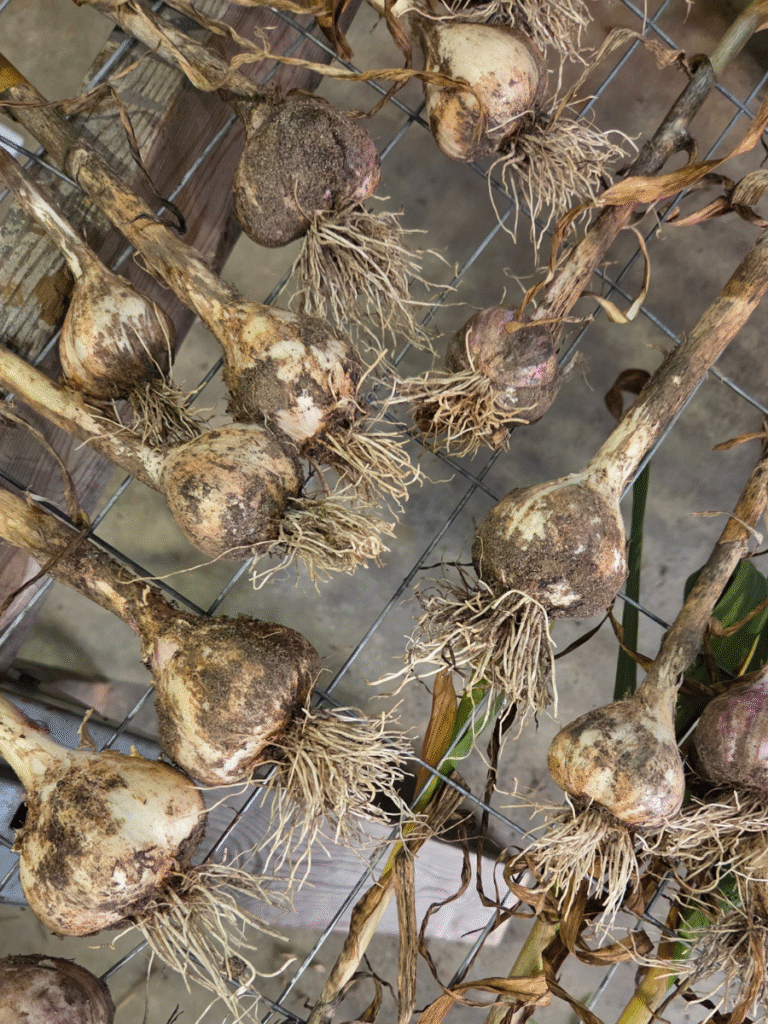Wondering when to plant veggies? This guide breaks it all down—growing zones, last frost dates, and timing tips to get your veggies in the ground or started in trays at just the right time. Let’s get those seeds started, so you’re ready for harvest!

When it comes to when to plant veggies, timing is everything. Plant too early, and frost might ruin your crops; too late, and they won’t mature in time. By knowing your growing zone, last frost date, and the needs of cool and warm-season crops, you set yourself up for a garden bursting with fresh, homegrown veggies.
Know Your Growing Zone
Knowing your growing zone is the first step in determining when to plant veggies and which plants are most suitable for your area. Your growing s is based on your area’s average minimum winter temperature and can range from zone 1 (coldest) to zone 13 (warmest). Enter your zip code on the USDA’s Plant Hardiness Zone Map to find your growing zone.
Last Frost Date
The second step is to determine your last frost date. This is when you can safely assume that the risk of frost has passed in your area. Knowing your last frost date is crucial as it will determine when to plant your warm-season crops. To find your last frost date, enter your zip code into the Almanac’s calculator.
Cool Season & Warm Season Crops
Now that you know your growing zone and last frost date, let’s talk about the difference between cool-season and warm-season crops. Cool-season crops are those that prefer cooler temperatures and can tolerate light frosts. These vegetables can be planted early in the season, even before the last frost date. On the other hand, warm-season crops require warm soil and air temperatures to grow. These vegetables can’t tolerate frost and should only be planted after the last frost date.
The information about when to sow seeds or transplant vegetables can usually be found on the back of the seed packet. Look for the “sowing instructions” or “planting instructions” section, which should include details such as the ideal planting time, seed depth, spacing, and watering requirements. Make sure to follow the instructions carefully to ensure the best possible outcome for your vegetable garden.
To help you plan your garden effectively, below are the recommended sow dates for planting seeds indoors and plant dates for transplanting seedlings outside for commonly grown cool-season and warm-season crops:

Cool Season Crops
Lettuce
- Sow date: 4-6 weeks before the last frost date
- Plant out date: As soon as the seedlings are large enough to handle and the soil can be worked
Spinach
- Sow date: 4-6 weeks before the last frost date
- Plant out date: As soon as the seedlings are large enough to handle and the soil can be worked
Broccoli
- Sow date: 6-8 weeks before the last frost date
- Plant out date: 2-3 weeks before the last frost date or as soon as the seedlings are large enough to handle and the soil can be worked
Cabbage
- Sow date: 6-8 weeks before the last frost date
- Plant out date: 2-3 weeks before the last frost date or as soon as the seedlings are large enough to handle and the soil can be worked
Carrots
- Sow date: 3-5 weeks before the last frost date
- Plant out date: As soon as the ground can be worked and the seedlings are large enough to handle
Peas
- Sow date: 4-6 weeks before the last frost date
- Plant out date: As soon as the soil can be worked and the seedlings are large enough to handle
Radishes
- Sow date: 4-6 weeks before the last frost date
- Plant out date: As soon as the soil can be worked and the seedlings are large enough to handle
Cauliflower
- Sow date: 6-8 weeks before the last frost date
- Plant out date: 2-3 weeks before the last frost date or as soon as the seedlings are large enough to handle and the soil can be worked
Brussels Sprouts
- Sow date: 8-10 weeks before the last frost date
- Plant out date: 2-3 weeks before the last frost date or as soon as the seedlings are large enough to handle and the soil can be worked
Kale
- Sow date: 6-8 weeks before the last frost date
- Plant out date: 2-3 weeks before the last frost date or as soon as the seedlings are large enough to handle and the soil can be worked.

Warm Season Crops
Tomatoes
- Sow date: 6-8 weeks before the last frost date
- Plant out date: 1-2 weeks after the last frost date, or when the soil temperature is at least 60°F (16°C)
Peppers
- Sow date: 8-10 weeks before the last frost date
- Plant out date: 2-3 weeks after the last frost date, or when the soil temperature is at least 65°F (18°C)
Cucumbers
- Sow date: 4-6 weeks before the last frost date
- Plant out date: 1-2 weeks after the last frost date, or when the soil temperature is at least 60°F (16°C)
Zucchini
- Sow date: 4-6 weeks before the last frost date
- Plant out date: 1-2 weeks after the last frost date, or when the soil temperature is at least 60°F (16°C)
Squash
- Sow date: 4-6 weeks before the last frost date
- Plant out date: 1-2 weeks after the last frost date, or when the soil temperature is at least 60°F (16°C)
Beans
- Sow date: 2-3 weeks after the last frost date or when the soil temperature is at least 60°F (16°C)
- Plant out date: Not applicable, as beans are typically direct-sown
Eggplant
- Sow date: 8-10 weeks before the last frost date
- Plant out date: 2-3 weeks after the last frost date, or when the soil temperature is at least 70°F (21°C)
Melons
- Sow date: 2-4 weeks before the last frost date
- Plant out date: 2-3 weeks after the last frost date, or when the soil temperature is at least 70°F (21°C)
Pumpkins
- Sow date: 2-4 weeks before the last frost date
- Plant out date: 2-3 weeks after the last frost date, or when the soil temperature is at least 70°F (21°C)
Corn
- Sow date: 2-3 weeks after the last frost date or when the soil temperature is at least 60°F (16°C)
- Plant out date: Not applicable, as corn is typically direct-sown.
Seed Starting Organizer Chart Free Download
To keep track of when to plant veggies and start seeds indoors, use a seed starting organizer chart. This will help you plan and stay organized throughout the growing season so you don’t miss any critical planting dates. Download now for free by entering your email below.
Helpful Gardening Links to Level Up Your Garden
For even more gardening success, here are some tools and guides to keep you on track:
- Free Printable Gardening Journal: Keep track of your garden’s progress with this handy journal.
- Starting Onions from Seed: Learn the best methods for growing onions from seed, right from the start.
- Easiest Vegetables to Grow: Perfect for beginners—discover the easiest veggies to grow with minimal effort.
- Easy Gardening Tips for Beginners: A beginner-friendly guide packed with practical tips for a thriving garden.
- Starting Seeds Indoors Guide: Get a head start on your garden by learning how to start seeds indoors.
- Organic Gardening for Beginners Made Easy: A step-by-step guide to growing an organic garden that’s as simple as it is rewarding.
- 7 Best Gardening Tool Sets for Every Gardener: Explore the top gardening tool sets for every skill level—making gardening smoother and more efficient.
By combining these resources with the right tools and timing, you’ll be on your way to cultivating a bountiful, beautiful garden in no time!






